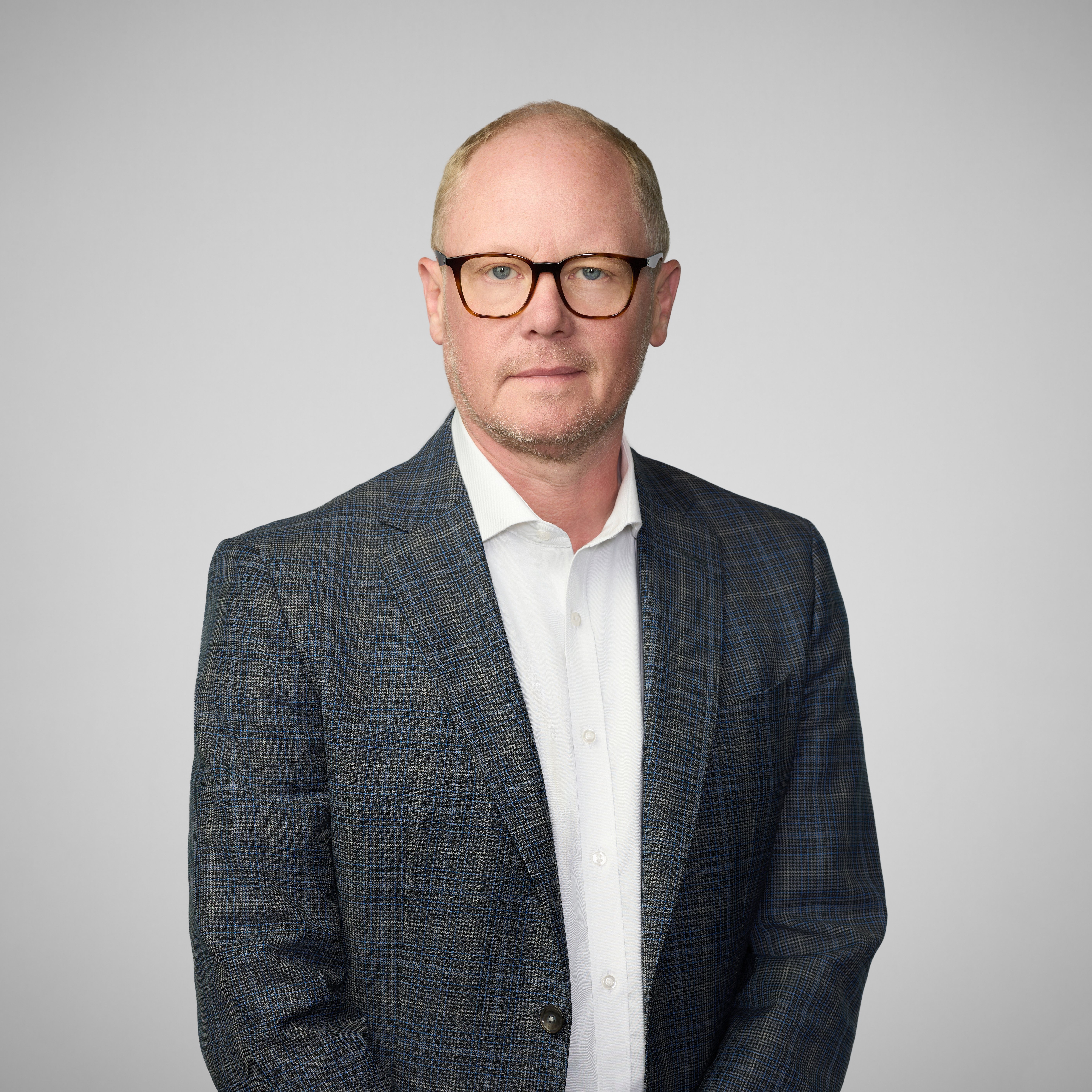Tunnl | Products | Audiences | Platform
Tapping Into Influence: Defining 3 Audiences Who Can Amplify Your Message
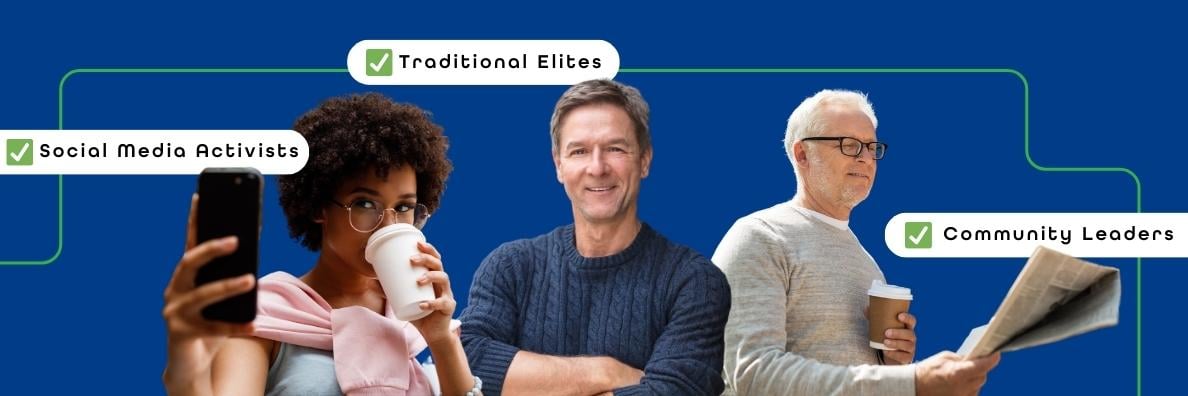
It’s now vital to put the social currency of the most influential people in your target community to work for you. In a highly fragmented media and communication landscape, peers and peer leaders communicate in a uniquely authentic and therefore effective way.
No matter if we call these people opinion leaders, elites, influentials, or influencers, they play a critical role in our public dialogue.
Tunnl has been at the forefront of learning about these people, studying them, and helping organizations and brands communicate with them. The changing nature of influence in communication with consumers, voters, and community leaders has led us to rethink the construct and realize that there are a variety of ways to communicate with them. 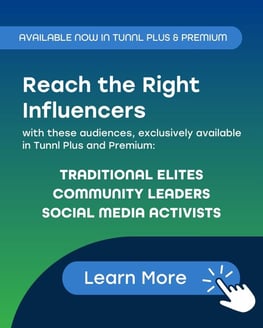
We've identified three key types of influencers who have emerged in America:
In this article, we'll define each group, unpacking the current state of their evolving demographics and media consumption behaviors, and teach you how to reach them with your campaigns.
Traditional Elites
The oldest theory on social influence is based on social class. The idea of an elite class controlling or influencing much of society is older than the study of sociology. The social theory of elites suggests that this class of individuals are the source of political and business leaders, they are thought leaders, and they largely control the flow of communication to the masses.
.jpg?width=943&height=314&name=Blog%20Header%20(6).jpg)
Far from the negative connotations associated with the term “elitism,” these people are, in actuality, drawn from a broad cross-section of society. Of course, the elites include New York bankers, D.C. lawyers, and Hollywood executives. But they also include people like doctors, dentists, lawyers, accountants in small and middle-sized cities, small business owners in immigrant communities, and other highly educated, well-off people within their respective communities.
Maybe there is a hierarchy of elites in the United States, but the social theory of elites would suggest that the best educated, highest income people in Lebanon, Kansas are just as important to information flow and leadership in their community as anybody in a major coastal city.
Community Leaders
Social science started to try to map and quantify the flow of opinion and information in the 1940’s and 50’s. Sociologist Paul Lazar began to study the impact of mass media on information flow.
He and Elihu Katz began to theorize that there is a two-step flow of information to the people.
Step 1: “Opinion Leaders” had social credibility and were the primary consumers of news and information. They read a lot and were well-informed.
Step 2: They interpreted the information based on their own point of view and shared it with their opinion followers.
Their theories were elaborated on by additional research in the field by Matthew Nisbet, who theorized that the influencers were individuals engaged in their communities like teachers, business leaders, Realtors, barbers, attorneys, and so on.
In the early 2000’s, popular books were written resurfacing the topic of influence and information flow. The Tipping Point, by Malcom Gladwell, and One American In Ten Tells The Other Nine How To Vote, And Where To Buy. They Are The Influentials, by Ed Keller and Jon Berry, both became popular reading for people trying to figure out how to cultivate and tap into grassroots movements.
Key to Gladwell’s theories was the more precise segmentation of the opinion leaders. He found connectors, mavens, and salesmen.
- Connectors bring the world together – they have a vast social network (foundational to his theory here is Stanley Milgram’s concept of “six degrees of separation” – I do suggest reading or rereading this study).
- Mavens are, to paraphrase Gladwell, teachers, but more emphatically, students. They are information sponges and brokers; well read and well informed.
- Salesmen are the persuasive people who pitch ideas and convince people to jump aboard.
By 2005, politicos and founders of Tunnl were anxious to put Gladwell, Keller, and Berry’s theories into practice. We began testing and experimenting with identifying and targeting our own definition of influencers.
Community Leaders are among the groups that emerged. Community Leaders are socially credible figures within their geographic communities who are tuned in culturally, physically, and politically with the events and happenings in their area, and openly share their knowledge and opinions with many other members of their community on a regular basis.

Over the years, we have evolved and modified our question battery and definitions to stay contemporary. But like Keller and Berry’s “Influentials,” and Galdwell’s “Connectors,” “Mavens,” and “Salesmen,” we found that today's Community Leaders are still the individuals with social credibility, who consume and share information, and are involved in their community.
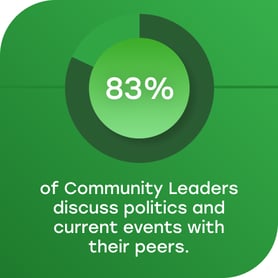 They are the people who are most likely to serve on a parent-teacher association, homeowners association, or be a leader in a civic organization, contact a politician, defend unpopular opinions, volunteer on campaigns, subscribe to a newspaper (paper or online), communicate with a lot of people daily, and enjoy discussing things like books, movies, and restaurants with their peers.
They are the people who are most likely to serve on a parent-teacher association, homeowners association, or be a leader in a civic organization, contact a politician, defend unpopular opinions, volunteer on campaigns, subscribe to a newspaper (paper or online), communicate with a lot of people daily, and enjoy discussing things like books, movies, and restaurants with their peers.
Community Leaders’ media consumption habits have changed, however. Back in 2003, just 77% of “the Influencers” had accessed the internet in the past 30 days. Now, the ubiquity of the internet permeates all influencer groups, making way for a newer, distinct class of digitally-native opinion leaders, the Social Media Activists.
Social Media Activists
The internet and social media have democratized distribution like never before to share one’s opinion broadly. There is no need to own a printing press or have a broadcast license to produce television programming. Social media platforms like Facebook, X, Instagram, TikTok, YouTube, Pinterest, Twitch, LinkedIn, and dozens of others have allowed virtually anybody to access a massive audience quickly. 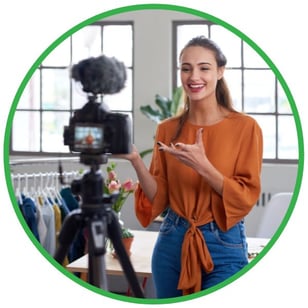
Social media is the balance to the theory that elites control the flow of information, and it has upended the two-step flow that Lazar and Katz theorized about. Communities on social media don’t have to live geographically close but are bound by interests and demographics.
Many users of social media still follow a traditional flow of information, mostly following and sharing news and opinion from mass market sources. Social science researchers see a range of information flows happening on social media. Theories like the magic bullet or hypodermic needle theory, believing that hyper-targeted communication can be customized on mass levels. Or one-step flows, allowing organizations, and elected leaders to communicate directly with stakeholders. And even complex multistep flow models are theorized about.
Books like the Chaos Machine by Max Fisher and The Filter Bubble by Eli Pariser attempt to describe the flow of information and the filtering and echoing occurring in social media. But we are still in the early stages of developing a real understanding of the impact of social media. And frankly, every user and every platform is unique. 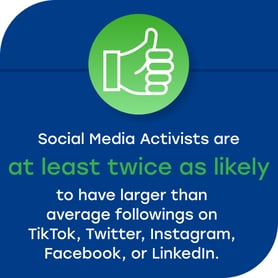
It is undeniable that while much content is shared online, we have democratized the creation of content, giving way to Social Media Activists. Social Media Activists are voters who are the most active on social media and utilize the platforms to share their views on issues and causes. They leverage their reach on social media to become celebrities and amass millions of followers who track, share, and amplify the ideals of the Social Media Activists.
But most users, creators, and influencers do not have the fame or following that those people do. They do, however, make a tremendous impact in the dissemination of information. And with the massive quantity of information created each day, social media allows users to determine what they value and what they want to share, as well as their thoughts about the topic.
While content and messaging on social media may be unique to the broad conglomerate of casual social media users, communicating with those people who are most engaged on social media is now a critical part of most campaigns.

Social Media Activists (themselves a highly incentivized, deeply engaged social media audience) have direct influence over millions of dedicated followers who return to social media time and time again to consume targeted, relevant content from their favorite influencers. The accessibility of social media and the rise of Social Media Activists is a testament to how influence is now acquired in America.
Because of the evolving nature of influence and information flow, more Americans are “influential” now than ever before. The general democratization of opinion in the country, increase of people with college educations, and ubiquity of communication tools like social media and the internet have enabled and empowered more people than ever.
By our current count, combining Tunnl’s Traditional Elite, our Community Leaders, and our Social Media Activists, more than 65 million Americans have the ability to influence those around them.
Reach These Audiences with Tunnl's Audience Intelligence Platform
Influence in America is no longer dominated by a single homogeneous group of influential adults. Diverse influencers have risen to educate, lead, and persuade the masses in distinct pockets of our society. Their voices lend a megaphone to your message, amplifying and validating it throughout their communities.
Advertisers need to reach the precise group of American influencers who can amplify their message, increase their impact, and drive results in their target communities.
To help you to reach the right influencers for your campaign goals in the most effective and efficient way possible, we built these three prebuilt audiences available exclusively in the Tunnl Platform:
- Traditional Elites - Voters who have a college education, have a high household income, and are well-established in their careers.
- Community Leaders - Voters who are most likely to be active in their community; grasstops and grassroots activists.
- Social Media Activists - Voters who are the most active on social media and utilize the platforms to share their views on issues/causes.
Backed by the most powerful cause and issue-based data library in the industry, when you inform your decisions with the audience insights provided by Tunnl Platform, you can feel confident that your message will reach the right people for your campaign goals in the most effective and efficient way possible, driving the change you want to see.
All Tunnl Platform subscriptions deliver insights into these audiences' (and hundreds of others') demographics and media consumption behaviors across social, streaming, and linear TV.
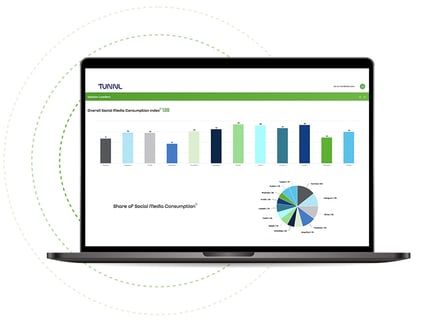
With Tunnl, you'll be able to leverage a suite of end-to-end planning, optimization, and measurement tools to inform every step of your campaigns:
|
|
Put your message at the epicenter of the communities you need to reach in the most effective and efficient way possible with these influencer audiences, available exclusively in the Tunnl Platform.
Request a personalized demo to see these audiences live in the Tunnl Platform, or keep learning about the Tunnl Platform where these audiences can be accessed.

